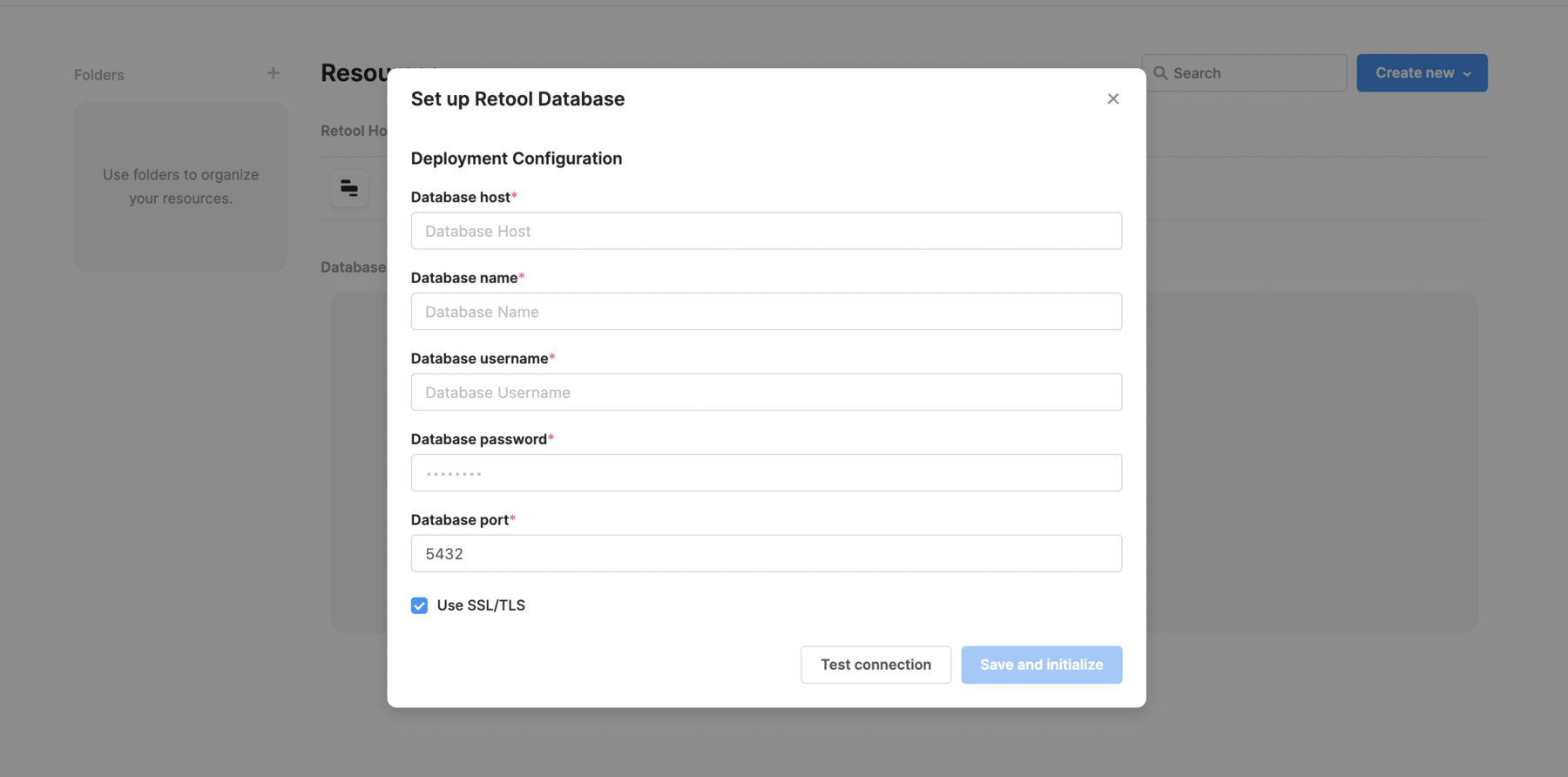Set up Retool Database on Self-hosted deployments
Learn how to configure Retool Database on Self-hosted Retool deployments.
Retool Database is a PostgreSQL resource provided by Retool. You can query it like any other resource, but it also includes a spreadsheet-like interface for interacting with data.
On self-hosted deployments, you can use your own PostgreSQL database to host Retool Database. Your database automatically connects to the main Retool backend service for your deployment. This allows you to use Retool Database's interface for managing data.
Retool Database is included in all pricing plans. Because you control your own PostgreSQL database on self-hosted deployments, there are no data limits or overages for Retool Database on self-hosted deployments.
Retool Database is separate from the storage database, which is required in self-hosted Retool deployments to store user information and logs.
Requirements
To use Retool Database on self-hosted deployments, you need:
- A PostgreSQL database. On self-hosted Retool versions 3.14 or later, you need a database running PostgreSQL version 14.3 or later.
- Credentials for a database user with permissions to create databases and roles. These credentials are used once to create the database and generate a generic user, who only has access to the created database. Further interactions, such as querying the database, use the generic user and its permissions.
Organizations with self-hosted deployments using Kubernetes, Helm, or ECS Fargate must specify a PostgreSQL database to use for the backend.
1. Add database configuration
Navigate to {your-domain}/resources?setupRetoolDB=1 on Retool and fill out the form with the following fields.
| Setting | Description |
|---|---|
| Database host | The URL or IP address. |
| Database name | The name of the database. |
| Database username | The username. |
| Database password | The password. |
| Database port | The port number. |
| Use SSL/TLS | Connect with SSL/TLS. |
Select Test your connection to confirm you can connect to Retool Database.

Docker Compose for a local, non-production database
Using Docker to host Retool Database is not recommended for storing production data, and Retool recommends externalizing the database
A Retool Database PostgreSQL container is automatically created and provisioned on new deployments that use Docker Compose. Refer to the retool-onpremise repository for more information on adding a Retool Database PostgreSQL container to existing deployments.
2. Save your resource
Click Save and initialize to save your Retool Database settings. You can now use with the Database editor UI to configure and interact with your Retool Database tables.
3. Import existing data
Retool always creates a new database for each of your environments. To import existing data to Retool Database, use pg_dump and psql commands.
You can use the connection strings dropdown to find the database host, name, user, password, and port for the current environment.
Changing the connection string does not switch the underlying data store, and the only way to migrate existing data from one database to another is through pg_dump and psql. You can also connect an existing PostgresSQL database using the native integration.
Use pg_dump and psql commands to migrate data between databases. Your commands might use the following structure:
pg_dump EXISTING_DATABASE_CONNECTION_STRING > pg_dump.sql
psql RETOOL_CONNECTION_STRING < pgdump.sql